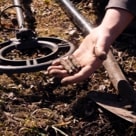The Klondike Gold Rush
Published by Sam Jacobs on 11/24/20
America has the California Gold Rush. It’s equivalent in Canada is the Klondike Gold Rush. All told, this brought 100,000 prospectors into the region, which was not sunny California, but the frozen tundra of the Canadian Yukon over the course of three years between 1896 and 1899, with the bulk coming in 1897 and 1898.
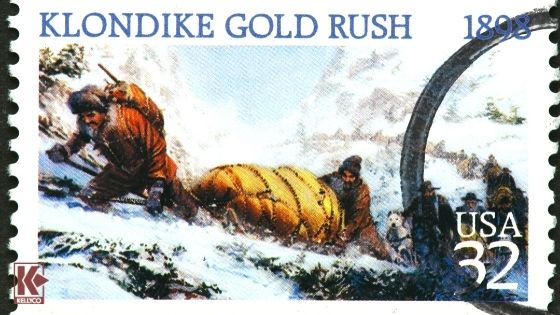
The Klondike Rush
Gold was first found in the Yukon by miners who had been working the region on August 16, 1896. Word quickly spread to Seattle and San Francisco, leading to the massive stampede of prospectors who arrived the next year. And while many arrived, this was not the free-for-all that many of the other gold rushes were due to the cold and remote location of the find. The Canadian government required that men arrive with at least a year’s supply of food to prevent mass starvation.
By 1898, the rush was largely over, not because the area had necessarily played out, but because the media had lost interest and was now focused on the Nome Gold Rush in Alaska. Many of the men who panned for gold in Alaska got their start working the goldfields of the Yukon.
Before the Gold Rush
Before the arrival of European settlers to the region, the native Hän people traded copper nuggets. In what is an all-too-common tale in history, they were aware that there was gold bouncing around, but they didn’t place any special value on it. Both Russian explorers and the Hudson Bay Company were present in the region decades before the Klondike Gold Rush but ignored the gold in the region because of the furs which offered far more immediate profits.
In the second half of the 19th Century, however, more enterprising American prospectors began to flood the region. They made arrangements with the local Tlingit and Tagish tribes, finally arriving at the Yukon Valley around 1870. It was here that they encountered the Hän, who, as mentioned above, we’re aware of the gold deposits but did not place any value on gold and also did not know the extent of the gold deposits that they were sitting on.
The Prospector’s Prospector: Ed Schieffelin
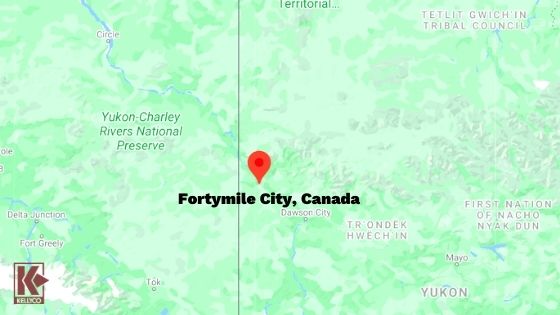
Boomtowns Of The Klondike Gold Rush
It was in 1883 that Ed Schieffelin, a prospector and Indian scout who had cut his teeth prospecting for silver in the Arizona Territory found gold deposits in a reconnoiter along the Yukon River. In 1886, he discovered large deposits of gold during a trip up the Fortymile River. As a result of this trip, he founded Fortymile City, one of the boomtowns of the Klondike Gold Rush.
Schieffelin was known as a restless and casual figure, who kept his long hair and beard for most of his years on this earth, even after Tombstone silver made him a millionaire. He rarely stayed still and moved from one boomtown to another in search of the massive continental belt of gold running through North America. He was convinced that in Yukon that he had found this, however, he didn’t last long — the cold of the region and the difficulties that it presented in prospecting had him searching for greener pastures in short order. His next stop was Alaska, which had the predictable effect of having him leave the north entirely. He eventually died prospecting in Oregon and was buried with his pick, his shovel, and his canteen outside of Tombstone.
Several hundred miners had arrived in advance of the gold rush proper in the late 1880s. This led to the birth of mining camps on both sides of the U.S.-Canada border. One boom town that sprung up in the early years before the rush was Circle City, founded in 1893. This was known at the time as “the Paris of Alaska” with a mighty 1,200 inhabitants, but lots of saloons, theaters, libraries, schools, and opera houses for the miners and their families. By 1896, Circle City was a ghost town as all the miners had left for the more remote parts of the Yukon in search of that Klondike gold.
The Discovery Claim

Bonanza Creek
Discovery Claim is the name for the place on Bonanza Creek where the Klondike Gold Rush began. This is in an area lying approximately 10 miles south-southeast of Dawson City, a remote little Canadian town of about 1,300 people. The site itself is now a National Historic Site that you can go visit this day.
Unlike many other gold rushes, we know exactly when the Klondike Gold Rush began. It began with the discovery of gold on August 16, 1896, by American prospector George Carmack and his wife Kate who was of Tagish Indian extraction. They discovered gold while stopping for a rest during a long trip up the river. One of the troops, which also included Kate’s brother and their nephew, spotted something shiny in the water. Carmack claimed that he found it, but this is disputed by some historians, who believe it was his brother-in-law or even his wife who gave up the claim fearful that the Canadian government would not recognize the claim of an Indian.
All told four claims came out of this: The law at the time allowed Carmack to establish a second claim because he was the first person to discover gold in the region. The other two claims went to his brother-in-law and nephew.
Orphaned at the age of 11, Carmack was a Marine Corps veteran who was serving in Alaska aboard the USS Wachusett’s when he deserted in 1882 to go care for his sick sister in California. He came back to Alaska in 1885 in search of his fortunes in fishing, trapping, and trading, the common activities of those in the region at the time.
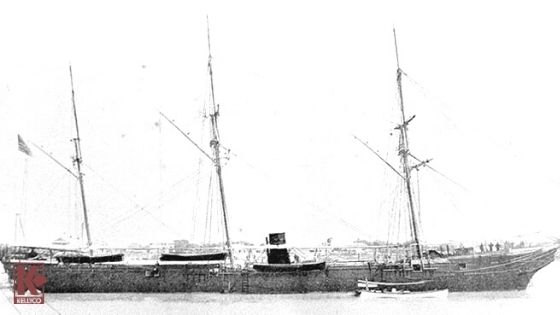
USS Wachusett
Carmack was generally disliked by the other prospectors in the area because of his closeness to the local native tribes, which eventually led to his marriage to Shaw Tláa (which means “gumboot mother”), who was known as “Kate.” They nicknamed him “Squaw Man” after the marriage but also referred to him as “Lyin’ George” due to his tendency toward exaggeration. The village of Carmacks, Yukon is named after him to this day, the site of his discovery of a large coal deposit.
The discovery of gold made Carmack a very wealthy man. He and Kate moved to Modesto, California after they struck it rich.
In 1900, Carmack abandoned Kate and married Marguerite P. Laimee in Olympia, Washington. They later moved to Seattle, where his new wife invested his money wisely in real estate, mostly office buildings, hotels, and apartment buildings. His investments made his fortune continue to grow, but he never gave up his passion for gold hunting. He even did a little prospecting in California as a fat old man in the the Sierra Nevada and Cascade mountain ranges. He died in 1922 at the age of 61 while working a claim.
Mount Carmack, along the Alaska-Canada border, is also named after him.
Rabbit Creek Becomes Bonanza Creek
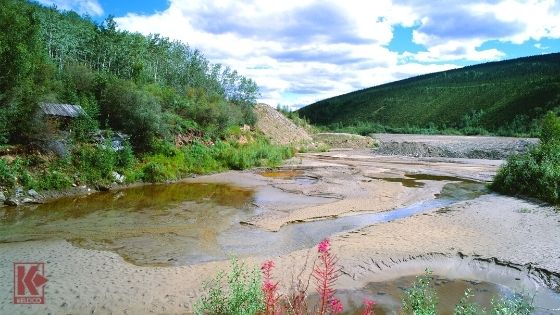
Rabbit Creek
The creek that Carmack and company were navigating was known as Rabbit Creek, but quickly came to be known as Bonanza Creek. By the end of August, the entirety of the creek’s banks was claimed by prospectors looking to get their share of the massive amounts of gold that were believed to be in the region. Additional gold was found up a tributary creek which was dubbed Eldorado Creek.
The claims which were made by the initial prospectors in the region quickly became a source of speculation. Claims were made, then bought and sold and traded among potential prospectors and land speculators looking to increase their wealth either through finding gold on the claim or by flipping it to another land investor or prospector. It was around this time that Circle City cleared out, but those who arrived at this time by dog sled found that most of the best claims were already taken.
Beyond Circle City, the news of the gold rush did not reach much of the outside world. This is because once the rivers of the area froze, travel to the outside world was virtually impossible. The stampede into the region began in the summer of the next year.
Stampede: The Klondike Gold Rush Begins in Earnest
The stampede kicked off the Klondike Gold Rush proper in July of 1897. All told, 100,000 people tried to get into the region, but it was only about 30,000 to 40,000 who made it all the way to the prospecting country.
On July 15, 1897, a ship arrived in San Francisco, with one arriving from Seattle two days later. These had huge amounts of gold ( the equivalent of $1 billion in 2020 dollars) on them and work quickly spread throughout the two cities, with men picking up stakes and heading off to the Great White North in search of a fortune in gold. The prospectors were joined by those looking to make coin off of the prospectors, including traders, photographers, and newspaper writers.
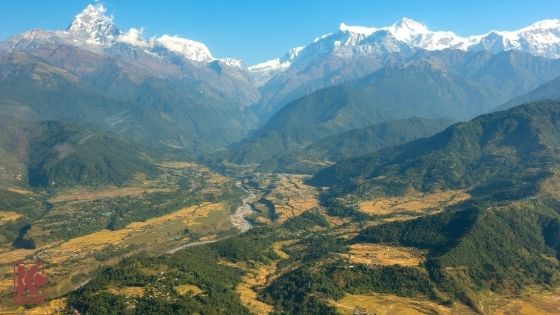
Remote Regions Of Canada
The news of a massive gold discovery came at exactly the right time. The United States was in the middle of an economic depression that saw gold prices spike as paper money became less valuable and was being hoarded by Americans. The Panic of 1893 and the Panic of 1896 dramatically damaged the labor market. This meant that there was both a thirst for gold and a ready and waiting labor pool of men willing to take off to remote regions of Canada in search of their fortune.
The prospectors were overwhelmingly American or recent arrivals to America — between 60 and 80 percent. Few of them had any experience in mining, with most of the new arrivals being salesmen and clerks. Among their number was John McGraw, the former governor of Washington, and William D. Wood, who was the current Mayor of Seattle and abandoned his post to go hunt for Yukon gold. It generally costs $1,000 ($27,000 in today’s money) to even get to the region.
Supplies were difficult to get to the region, which made them both scarce and expensive. Savvy marketers added the name “Klondike” in front of just about any supply one might need, to imply that it was specially designed for those working in the region. Some examples of high prices include salt (which reached parity with gold), nails ($28 per pound or $784 in today’s dollars), butter ($5 per can or about $140 today), and eggs ($3, equivalent to $84 today). Scurvy was common in the camps.
Rich prospectors were not prevented from spending big on food, drink, and entertainment. It was expected that rich prospectors would go through a $60 bottle of champagne in a single night, equivalent to $1,660 today. Dice pots often started at $1,000 ($28,000) and poker pots at $5,000 ($140,000). Prosperous prospector Jimmy McMahon once spent $28,000 ($784,000) in a single night.
Unlike many gold rushes, the Klondike Gold Rush is known for a preponderance of law and order, with the Northwest Mounted Police keeping the local population in line.
The region was 92 percent male, with less than one percent of all women in the area working a claim.
The End of the Klondike Gold Rush
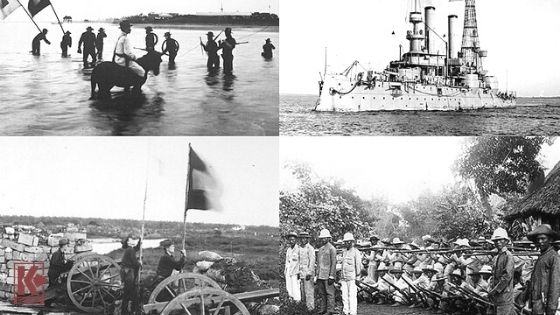
Spanish American War
The Klondike Gold Rush began to taper off in the summer of 1898 when many prospectors, unable to make any money, started leaving the region. Casual work wages fell dramatically because there was a glut of labor in the region. The average laborer made about $100 per month, equivalent to $2,700 today. The attention of the newspapers turned from the Klondike region and it’s gold to the Spanish-American War, which kicked off on April 21, 1898.
When gold was found in other, neighboring regions (primarily Nome), the area largely emptied of everyone seeking fortune, leaving only those who had already made it, either through the gold itself or by selling goods that the prospectors couldn’t do without.
Discovery Day is still a holiday in the Yukon to this day, celebrated on the third Monday in August.

